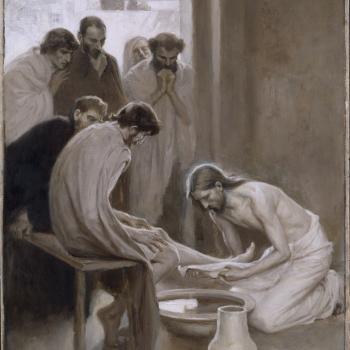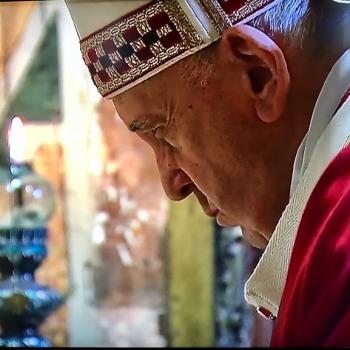I’m writing back to back truth-sifting-to-the-top posts today.
It happens that way sometimes. The truth, after a loud cacophony of untruths, will suddenly start sifting to the top all at once.
It seems that the story of Irish nuns having dumped 700 baby bodies into a septic tank is just that: A story. Or rather, a hoax. Or, to put it bluntly the invention of an anti-Catholic press looking for anything at all to be turned into another scandalizing story about the Church.
Father James Martin, SJ, who is an editor at large at America magazine, pinged the Associated Press in public about their inaccurate reporting of the Septic Tank Story. The AP responded by printing a retraction.
The one time I asked for a retraction from a publication because of a story about me, the story was serious lawsuit bait. They printed a left-foot-of-honesty retraction kind of like this one. Instead of just saying “we got it wrong folks,” they spent most of the ink saying that I hadn’t been available when they tried to contact me to verify.
I should have demanded at least one other retraction, for the same reason, (lawsuit bait) but didn’t. I kind of regret that now. However, I’m sure their retraction would have been as murky as the one I got the first time. After being attacked like this for years, I’m slower than most to believe these too-bad-to-be-true exposes.
Since it wouldn’t be possible for either the dead nuns or the dead babies to sue, my hat is off to the Associated Press for giving it up and doing a retraction. I am also grateful to Father Martin for pushing them to do it. America Magazine has the clout to force the issue, something that not everyone does.
I want to ask Public Catholic readers to stop and consider all this in light of themselves and their reactions. The babies buried in the septic tank story sounded bogus from day one. It was implausible on its face. I wrote about this and then commented on it in the com boxes. The response was that a few commenters chimed in with reality-stretching explanations as to why the story could have been true, despite the impracticality of stuffing 700 bodies into a septic tank.
I think those people wanted to believe the story, for their own reasons.
On the other hand, a lot of good people got drug off the road by this story. I imagine there were heartsick Catholics all over the world going, “not again,” when they read this thing. I’m guessing that a lot of them got down at heart over it, and maybe even a few of them wondered if they would still follow the Church.
That was the agenda behind this story. The reason for jumping on this odd assortment of random facts and stringing them together into accusations of 700 baby bodies thrown into a septic tank by nuns who operated a Catholic orphanage was … well … to damage the Church and to destroy your faith.
I had no hard proof the story was bogus.
But my knowledge gained from having lived in a household that used a septic tank,
plus my understanding of the space requirement for 700 bodies,
plus my knowledge of the Church’s teachings about respect for human remains,
plus my understanding of the kind of people I know nuns to be,
plus my understanding of how lousy the popular press is with anti-Catholicism
led me inexorably to the conclusion that the story, minus some real proof, was, to put it bluntly, almost certainly a dead, flat lie.
However, I didn’t jump out there and say this is a lie. What I did was counsel you to wait and see how it all turned out; to let the truth sift itself to the top.
I’m going back over this now to caution readers, once again, about the popular media. You can’t believe them. They deliberately use stories that get you worked up and hook you into obsessive viewing throughout their 24-hour news cycle.
More to the point, much of the popular media is rabidly anti-Catholic. I look at a lot of news stories about religion, and I can tell you that I see story after story, trashing the Catholic Church, Christians and Christianity. The rare balanced — not favorable, but balanced — story stands out like a flashing light.
Most of what the media is saying about the Church is carefully selected and edited to put the Church in the worst possible light. I think the reason for this is that the Church has taken courageous stands on social issues that go against the media zeitgeist.
In this atmosphere, my advice to let the truth sift itself to the top is doubly important. Do not allow yourself to be yanked around emotionally by these stories. Do not bite down on the the totally untrue implication that you have to decide who is right or wrong and what should happen to them.
There are plenty of things in your life that you need to decide, and plenty of things you need to be concerned about. But these endless cycles of outrageous and manufactured stories are not among them.
When it comes to negative reporting about our Church, get out your salt. Take every negative story published about the Church that does not have substantial objective facts that you can look at yourself to back it up with as much salt as you can load in your wagon and wheel in.
Here, courtesy of America, the National Catholic Review, is the left-footed retraction from the Associated Press. Notice it falls over itself with one thing that has been lacking in the reporting of this story: Specificity. The retracting is limited to specific facts the AP got so wrong there is no denying it. Even then, they toss in the idiot jibe that “that may have occurred” regarding refusal of baptism. No proof, no fact; just speculation to gloss their mistake.
Ireland-Children’s Mass Graves story
DUBLIN (AP) — In stories published June 3 and June 8 about young children buried in unmarked graves after dying at a former Irish orphanage for the children of unwed mothers, The Associated Press incorrectly reported that the children had not received Roman Catholic baptisms; documents show that many children at the orphanage were baptized. The AP also incorrectly reported that Catholic teaching at the time was to deny baptism and Christian burial to the children of unwed mothers; although that may have occurred in practice at times it was not church teaching. In addition, in the June 3 story, the AP quoted a researcher who said she believed that most of the remains of children who died there were interred in a disused septic tank; the researcher has since clarified that without excavation and forensic analysis it is impossible to know how many sets of remains the tank contains, if any. The June 3 story also contained an incorrect reference to the year that the orphanage opened; it was 1925, not 1926
For more details, check out Kathy Schiffer’s great post on this topic.











